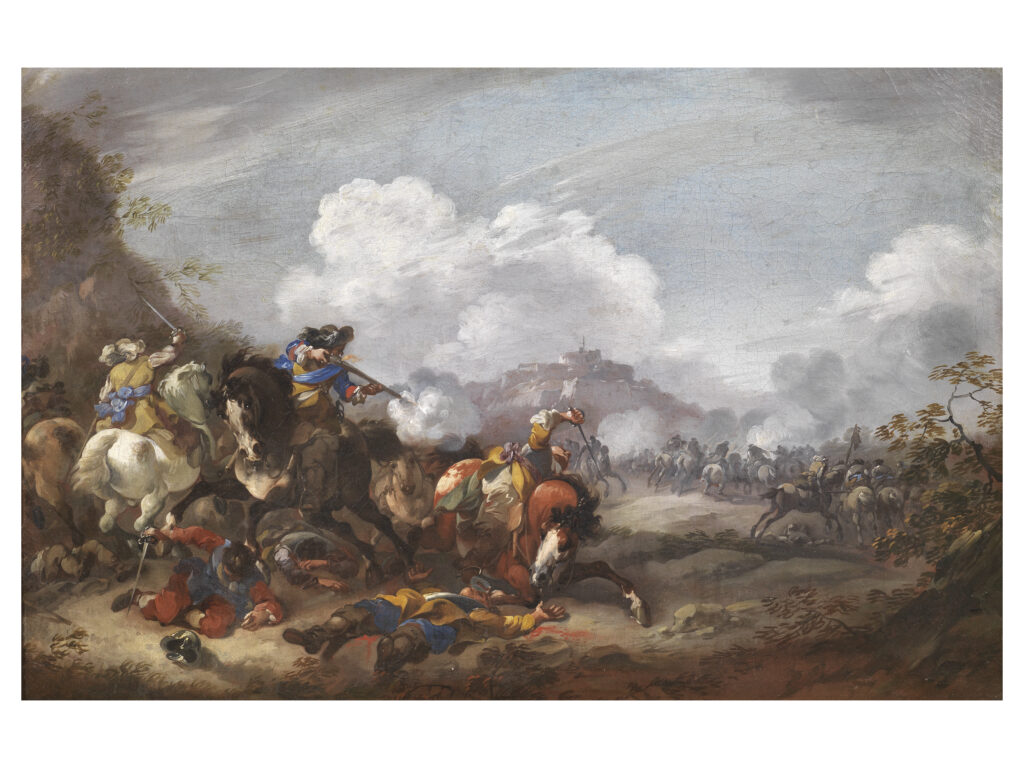FRANCESCO MONTI, CALLED BRESCIANINO DELLE BATTAGLIE
Brescia, 1646 – Piacenza, 1703
Pair of cavalry clashes
oil on canvas, cm 53×81
The pair of battles shown here represents a typical example from the mature phase of the painter Francesco Monti, better known as Brescianino delle Battaglie.
His apprenticeship with Pietro Ricchi and his stays in various Italian cities have proved extremely useful for an organic understanding of the evolution of Monti’s style over time, an evolution that was also stimulated by the relationships forged with the other painters he met in the various locations he visited (Pieter Mulier, Jacques Courtois, Salvator Rosa).
Our canvases show the strong inspiration from Rosa, rather than the influence of Courtois. Indeed, the decision to focus on tangled brawls, petty clashes, knights who have been or are about to be unhorsed, in which hand-to-hand combat and the use of firearms and blades prevails, all derives from the influence of Rosa. Also borrowed from Rosa is the choice of colours, characterised by strong bright tones that rhythmically mark the unfolding of the scene, dominated by cobalt blue.
In comparison with our canvases, we can mention a battle (part of a pendant pair that recently passed through the antiques market) in which the cavalrymen and horses appear very similar, as do the dense paintwork with broad brushstrokes and the same blues used in the sashes worn by the figures. A further comparison, pertaining to the painting technique, can be found in a pair of shutters painted in monochrome by Brescianino for the stuccoed apartment of Palazzo Farnese in Parma and in a Battle Scene in the collections of the Senate of the Republic. As in our works, the latter is dominated by a sketchy draughtsmanship, a descriptive immediacy aimed at capturing the whole and the fervour of the scene rather than lingering on the details or emphasising one character in particular. Lastly, the repetition of the same positions in some of the unhorsed and dying horsemen is a further element of comparison that leads us to attribute the pair of paintings to the Brescian painter.


